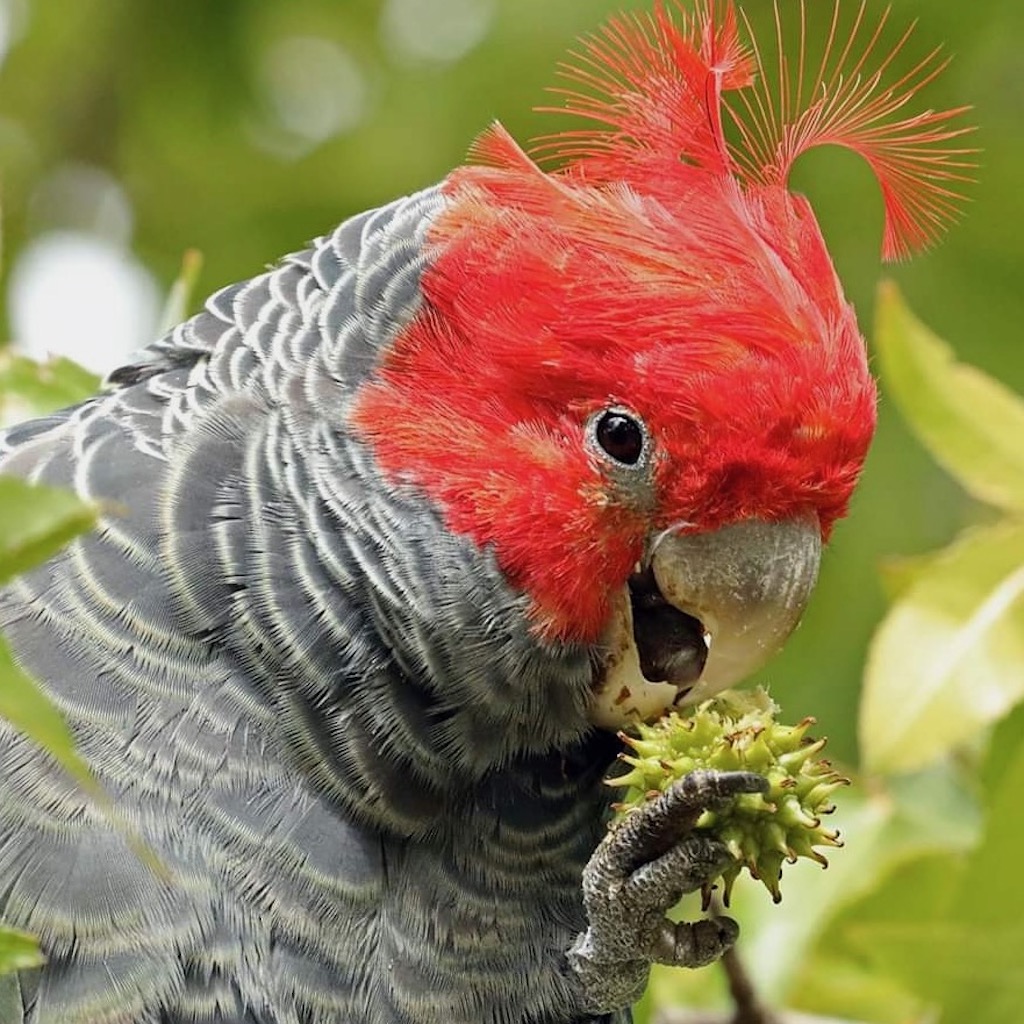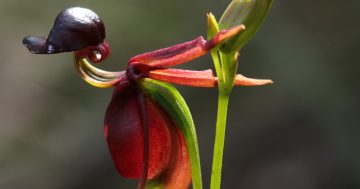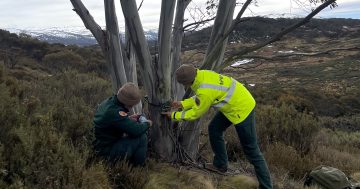
Gang-gang cockatoos are sometimes seen in Canberra but are a rarity in neighbouring southern NSW. Photo: David Flannery.
As Gang-gang cockatoos and koalas join Australia’s threatened species list, a sliver of good environmental news emerges.
The Land for Wildlife (LfW) program has received eight new recruits to the private land conservation network in southern NSW.
The new assessors will offer specialised technical and educational support to property owners who are members of the scheme.
Among the new regional officers are experienced ecologists, Landcare leaders, environmental science graduates and natural resources and conservation managers.
They will work on properties in Cowra, Hilltops, Upper Lachlan, Goulburn Mulwaree, Yass, greater Sydney and the Illawarra.
Connecting with people in the bush, LfW is a free and voluntary property registration scheme for landowners who wish to manage areas for wildlife and native vegetation on their property.
The program encourages and helps landholders to include nature conservation and other land management objectives.
Wildlife spokeswoman Mary Bonet said there was no shortage of people wanting to become assessors, but it was only recently Land for Wildlife received additional money to support the conservation program.
“People don’t have to pay to join, but we need to have funding to support the program,” she said.
She said people like Gunning landowner and orchid enthusiast John Weatherstone jumped at the chance to see what species were on people’s properties.
“Another one is Tony Saunders who is really interested in birds, or (ornithologist) Frank Antram,” Mary said.
“The reason they become assessors is they get so much enjoyment from going to someone’s property and seeing some of the things that are there – seeing an orchid or spotting a rare bird.”
Mary said for those interested, the eligibility net is fairly broad.
“Anyone who has half a hectare or native habitat on their property is eligible to join the program,” Mary said.
“If the assessor goes out and feels that it does not quite meet the criteria, they may not get full registration but will be on their way to registration. They will get advice on what they could do to improve their habitat.
“We don’t turn anyone away.”
Mary said the valuable conservation program was about protecting the habitats we already had and looking at how we could maintain and improve them, rather than focusing only on revegetation.
As more people escape to the bush from metropolitan cities, Assessors could also become an asset in managing added pressure on the land.
“Quite often new landowners want advice on how to look after the land; they are attracted to that beautiful habitat and want to learn more about it,” Mary said.
“It is just as much the older established farmers who are equally interested when they find something good on their property. Going out to the properties you actually find the farmer is an absolute bird enthusiast and has been collecting records of all the birds for the last 30 years on the property.
“You would be surprised how much interest there is from both the new and older property owners.”
Mary can barely remember when she last saw a Gang-gang cockatoo. It was most likely in Canberra. Her last NSW sighting was at Wombeyan Caves.
The enchanting grey cockatoos are among native species in decline. In the latest State of the Environment estimate, since 2016 more than 200 plants and animal species have been added as threatened species to the government’s list. These include the koala, Gang-gang cockatoo and Watson’s tree frog.
A partnership between the Great Eastern Ranges and International Fund for Animal Welfare provided funding to answer the high demand for LfW assessors as part of a broader bushfire recovery effort.
The program’s cornerstone is a one-on-one visit by the local officer who will help landowners develop a personalised property plan. This helps integrate nature conservation with other activities such as residential use and grazing.
Other benefits include access to funding and training opportunities and being part of a network of like-minded people to support and encourage conservation.








